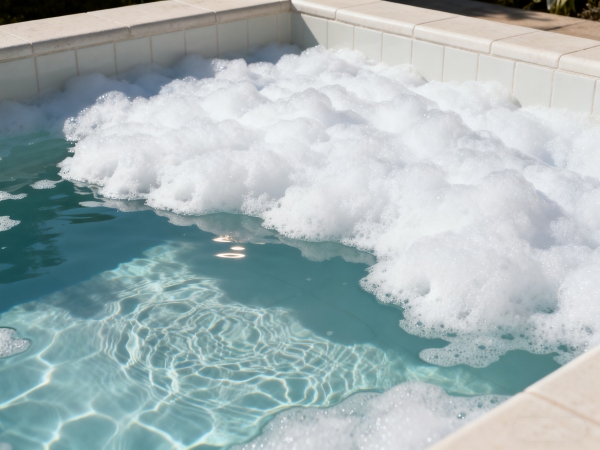What are Surfactants?
Surfactants, or surface-active agents, are chemical compounds that reduce surface tension between two substances, such as between a liquid and a solid, or a liquid and a gas. This property allows surfactants to alter the behavior of liquids, making them crucial in a wide range of products, including cleaning agents, shampoos, soaps, detergents, and even food.
Essentially, surfactants contain two parts: a hydrophilic (water-attracting) head and a hydrophobic (water-repelling) tail. This dual nature allows surfactants to interact with both water and oils or grease, making them effective at breaking down oils and dirt.
How Do Surfactants Work?
Surfactants function by reducing the surface tension of liquids, allowing them to spread more evenly across a surface. In cleaning products, for example, surfactants lower the surface tension of water, helping it to penetrate surfaces more effectively and loosen dirt, oils, and grease.
When mixed with water, surfactants form structures called micelles, where the hydrophobic tails trap oils and dirt, while the hydrophilic heads interact with water, making it easier to rinse away these impurities. This mechanism is what makes surfactants the active agents in most cleaning processes.
Types and Uses of Surfactants in Daily Life

There are four main types of surfactants, each with its own specific uses in various products:
- Anionic Surfactants: These are negatively charged and are commonly used in soaps, detergents, and shampoos. They effectively remove dirt and oil due to their strong cleaning properties.
- Cationic Surfactants: These carry a positive charge and are often found in fabric softeners, disinfectants, and conditioners. They help reduce static and soften fabrics by binding to negatively charged surfaces.
- Nonionic Surfactants: Without a charge, nonionic surfactants are mild and commonly used in products like facial cleansers, baby shampoos, and certain food items. They are gentle on the skin and effective in emulsifying oils without irritating.
- Amphoteric Surfactants: These surfactants can be both positively and negatively charged, depending on the pH of the solution. They are frequently used in personal care products like shampoos, body washes, and facial cleansers because they are gentle and versatile.
Applications in Daily Life:
- Household Cleaning: Surfactants are the key ingredients in most cleaners and detergents, ensuring that dirt and grease are effectively removed from surfaces.
- Cosmetics and Personal Care: In shampoos, body washes, and lotions, surfactants help cleanse, moisturize, and improve the texture of products.
- Food Industry: Surfactants are used in food processing as emulsifiers, stabilizers, and foaming agents, helping to blend ingredients that would otherwise separate, like oil and water.
How Surfactants Enhance Product Performance?
Surfactants are vital for enhancing the performance of products in multiple ways:
- Improved Cleaning: In detergents, surfactants break down oil, grease, and dirt, making it easier for the product to remove stains and leave surfaces clean. Without surfactants, many cleaning agents wouldn’t work as efficiently.
- Foam and Texture: In personal care products, surfactants are responsible for the foam and texture that people expect in products like shampoos, soaps, and bath gels. The foam is not just aesthetic; it also improves the spreadability of the product and enhances its ability to cover more surface area.
- Stability: Surfactants improve the stability of emulsions (mixtures of water and oil), preventing separation over time. This is crucial in products like lotions, creams, and certain foods, where consistency is important.
- Better Application: Surfactants ensure that products, such as paints or agricultural sprays, spread evenly across surfaces, reducing streaks and ensuring uniform coverage.
Conclusion
Surfactants are indispensable in both household and industrial products, enhancing performance in cleaning, emulsifying, foaming, and texture. Their ability to interact with both water and oils makes them key to numerous applications, from personal care products to food processing. Understanding how surfactants work and their diverse roles in different products can help consumers make informed choices about the products they use. With their widespread benefits, it’s clear that surfactants are not just chemical additives—they’re essential components in the daily products we rely on.
